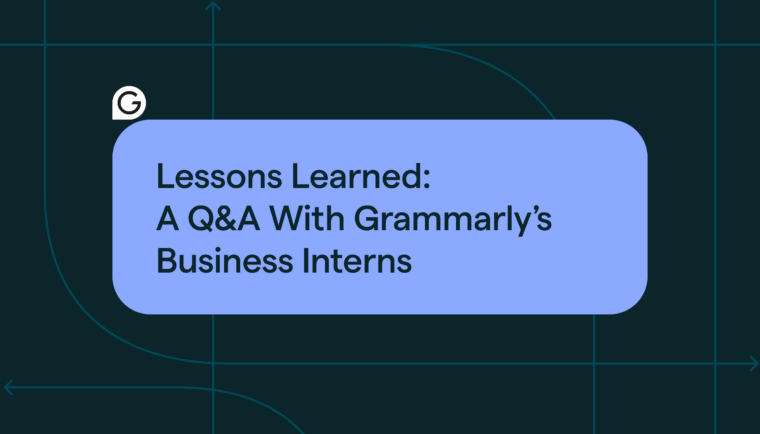
We’re in the middle of a huge shift in how we work and communicate, and the truth is, no one fully knows how to build products for this new reality. But as we navigate these changes, we can rely on one North Star: putting the user at the center of what we do. Understanding your users, appreciating their context, and being connected to their needs—and especially how those needs evolve—is more important than ever before.
“Well, that’s obvious,” you might be thinking. But it’s actually quite easy to lose your focus on the user and get led astray. In this article, I’ve included some stories about when this has happened to me and my team—drawn from fourteen years at Google, where I was Vice President of Product Management before joining Grammarly as Global Head of Product. I share the top five lessons I’ve learned while scaling products to billions of users and how we put these ideas into practice at Grammarly.
Grammarly is an AI-powered digital writing assistant at a time when communication is more distributed, asynchronous, and plain challenging than ever. Our technology—which includes advanced machine learning and deep learning techniques—helps 30 million people and 30,000 professional teams communicate clearly and effectively wherever they write. I’m very excited by Grammarly’s potential to touch billions of lives. Keeping these five lessons in mind will help us get there.
Lesson 1 Measure what matters to your users
Product managers are used to balancing many different priorities and, as a result, tracking many different metrics. A very human tendency in the face of all this complexity is to measure what’s easy—not what actually matters. The approach I’ve found that works well is to look at features from the perspective of your users and measure what they care about.
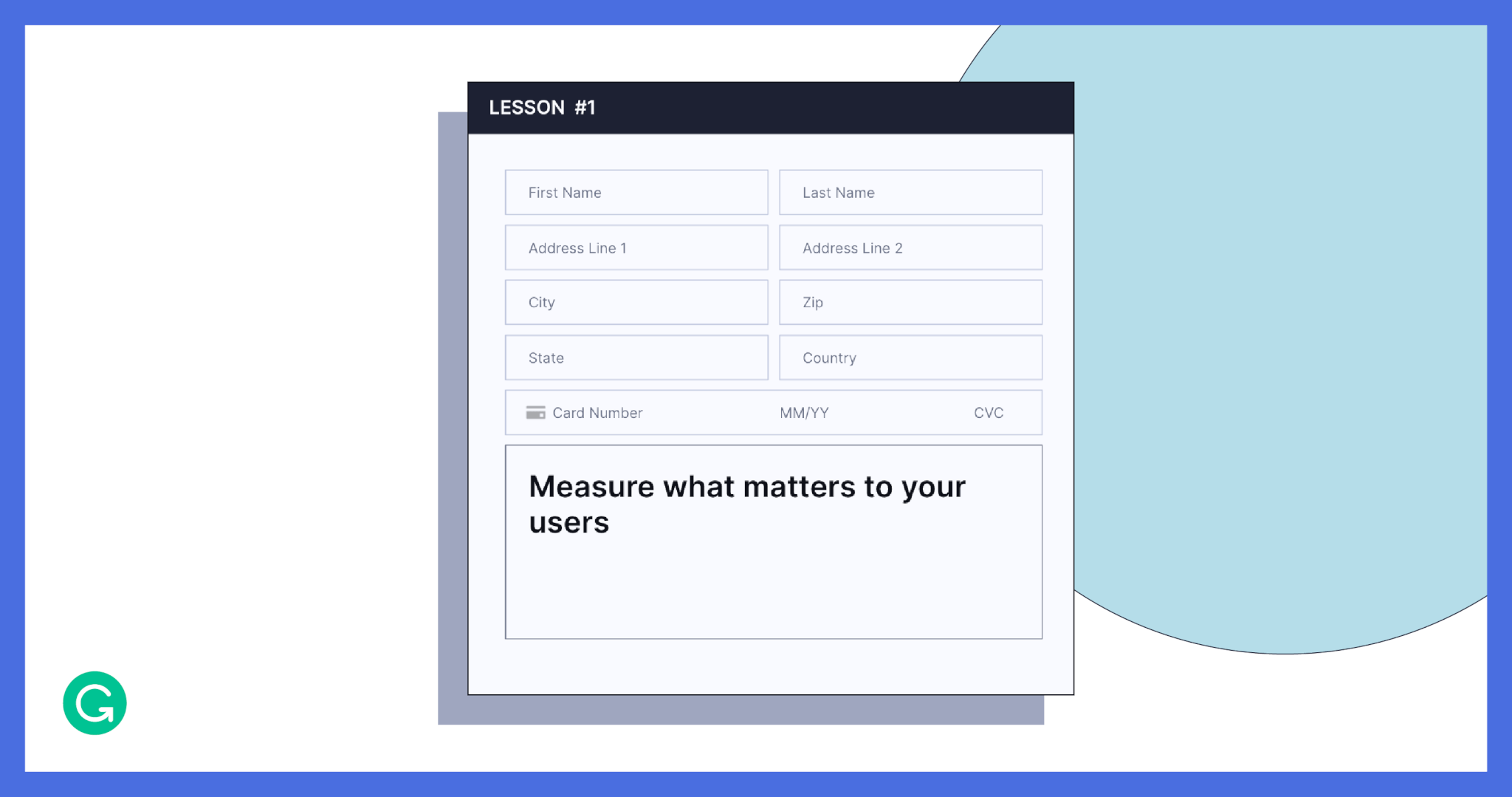
My experience working on Chrome autofill was an important lesson in making sure you measure what users truly care about.
When I worked on Chrome autofill, we used to track our accuracy across each field in a form. The metrics looked good, yet people complained about unreliability. Then a smart young PM put themselves in the user’s shoes. If autofill got just one value wrong, the user’s peace of mind was gone: They’d have to go through the entire form, on the lookout for more mistakes. Once we had the right metric—how often we got all the autofilled values right—the complaints made sense, and we set new objectives around the kind of reliability users actually valued.
At Grammarly, we know that users care about achieving their desired communication outcomes, whatever that might be for a given individual and their context. Maybe their goal is to strike a confident tone in an important email. Or, they could be on a team that wants to be sure they’re communicating consistently with their customers. How do we measure success here? We’re still learning, but we think that it’s less about tracking traditional engagement metrics—especially in a world where screen fatigue is now a common problem! Instead, we’re committed to measuring the communication outcomes our users care about.
Lesson 2 Understand your users’ world
As product managers, our conscious and unconscious assumptions get baked into the product we build. But our users are constantly changing. Either our existing users are operating within new paradigms (like we’re seeing with remote work), or new types of users are using our product in ways we didn’t anticipate, or both. It’s essential to stay connected to your users’ context and keep updating your understanding of their world.

The contexts in which products are used today are diverse, global, and always changing.
About a decade ago, I was working on Chrome when smartphone usage started growing rapidly in large emerging economies like India, Nigeria, and Indonesia. To help us address these markets, a teammate had the great idea to organize trips to these countries where groups of PMs, engineers, and designers could observe their users’ context firsthand. I’ll never forget being in someone’s home, watching them launch Chrome. They then stared in confusion at the blank page with the Google search box. They reloaded the page, thinking there’d been an error. We’d assumed that anyone using our product would be familiar with search and the web, but that assumption was not true for these new users.
Communication is always contextual—the way you address colleagues on Slack is different from how you text with your family. Furthermore, every user brings their own diverse backgrounds with English to our product. Part of Grammarly’s challenge in the coming years is to support all of these contexts, types of users, and ways that language can be used. This can mean everything from creating new product offerings, as we’ve done with Grammarly Business, to making our AI writing assistant more personal and context-aware using new machine learning techniques.
Lesson 3 Understand your users’ pivotal journeys
Pivotal journeys are the ones that people typically don’t do very often, but when they do, it’s critically important to get it right. What happens when a credit card is out of date? How do users reset their password? Pivotal journeys can feel like busy work for product and engineering teams. But building these journeys with empathy and care can make all the difference for your users.
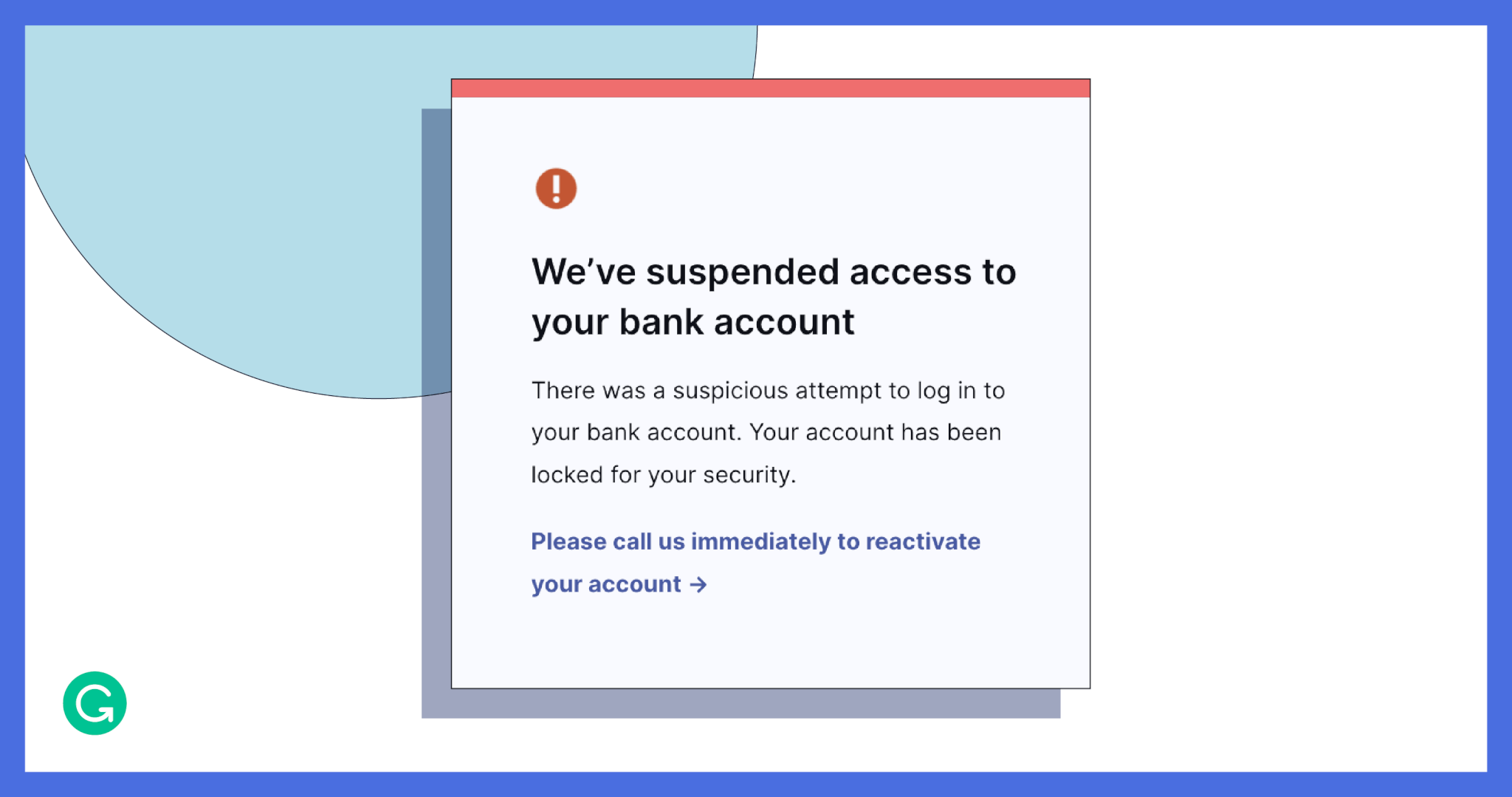
Pivotal journeys, like when a bank suspends access to an account for security reasons, happen infrequently but have a major impact on users.
One of the teams I was responsible for at Google was the Google Account team, where account recovery was a pivotal journey. During the early days of the lockdown in 2020, the support staff that handled account recoveries were not able to access the tools they needed. When a group of engineers and PMs volunteered to work on these account recovery flows themselves, what they found was a fairly clunky process that caused unnecessary steps for the user and support staff. After experiencing it firsthand, they figured out many ways to make the process a lot better.
Communicating effectively is so important that, at Grammarly, we are investing in understanding our users’ pivotal journeys. For example, many of our users talked about the anxiety they felt after sending an important email, wondering how it would be received and hoping their words wouldn’t be taken the wrong way. Without the benefit of facial expressions or body language, written communication becomes that much more intimidating. To help users in these moments, Grammarly built a tone detector that shows the writer how they come across. Was the tone friendly? Formal? We often hear from users that this is one of their favorite features because it helps reduce anxiety.
Lesson 4 Deliver moments of joy
Our users are not automatons—they’re human beings, leading busy lives. Finding little ways to bring a moment of unexpected joy or happiness makes the product experience that much richer.
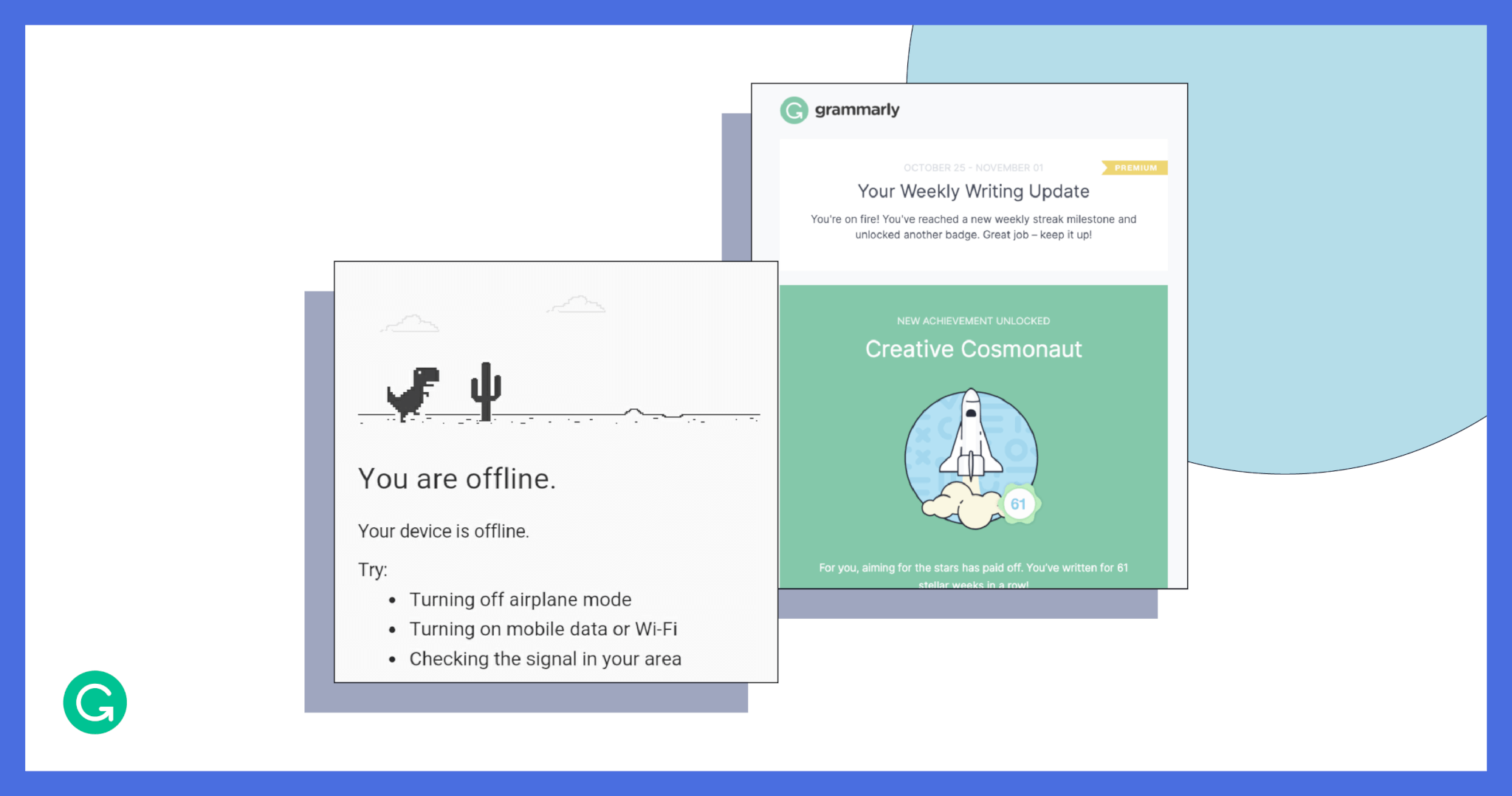
The Chrome “dino game” (left) and Grammarly’s writing achievements (right) are examples of how product teams can bring joy into the user experience.
I’ll never forget when a designer on the Chrome team decided to make a simple interactive “dino game” on the Chrome error page to lift users up when the internet was down. This whimsical idea ended up having a huge emotional impact. It’s one of the most played games in the world, and always brought out a smile whenever I’d talk to people about Chrome.
One of the experiences of using Grammarly that always makes me smile is when I get a weekly summary email. There are some interesting writing statistics, but what I really appreciate is the fun awards and words of encouragement. Moments of positive recognition are getting harder to come by in a world where we have less immediate in-person feedback from our peers. This makes injecting delight into our products more important than ever. At Grammarly we’re actively thinking about how we can leverage technology to bring more joy to the communication you do every day with other people.
Lesson 5 Earn and strengthen your users’ trust
Tech has transformed people’s lives for the better—but at the same time, there’s been a general erosion in user trust. It’s critical for every PM to develop an understanding of user trust and what it means for how we do our work. One simple way to think about this is the trust equation. The trust equation is a model developed and outlined by former Harvard Business School professor David H. Maister, along with Charles H. Green and Robert M. Galford, in their book The Trusted Advisor.
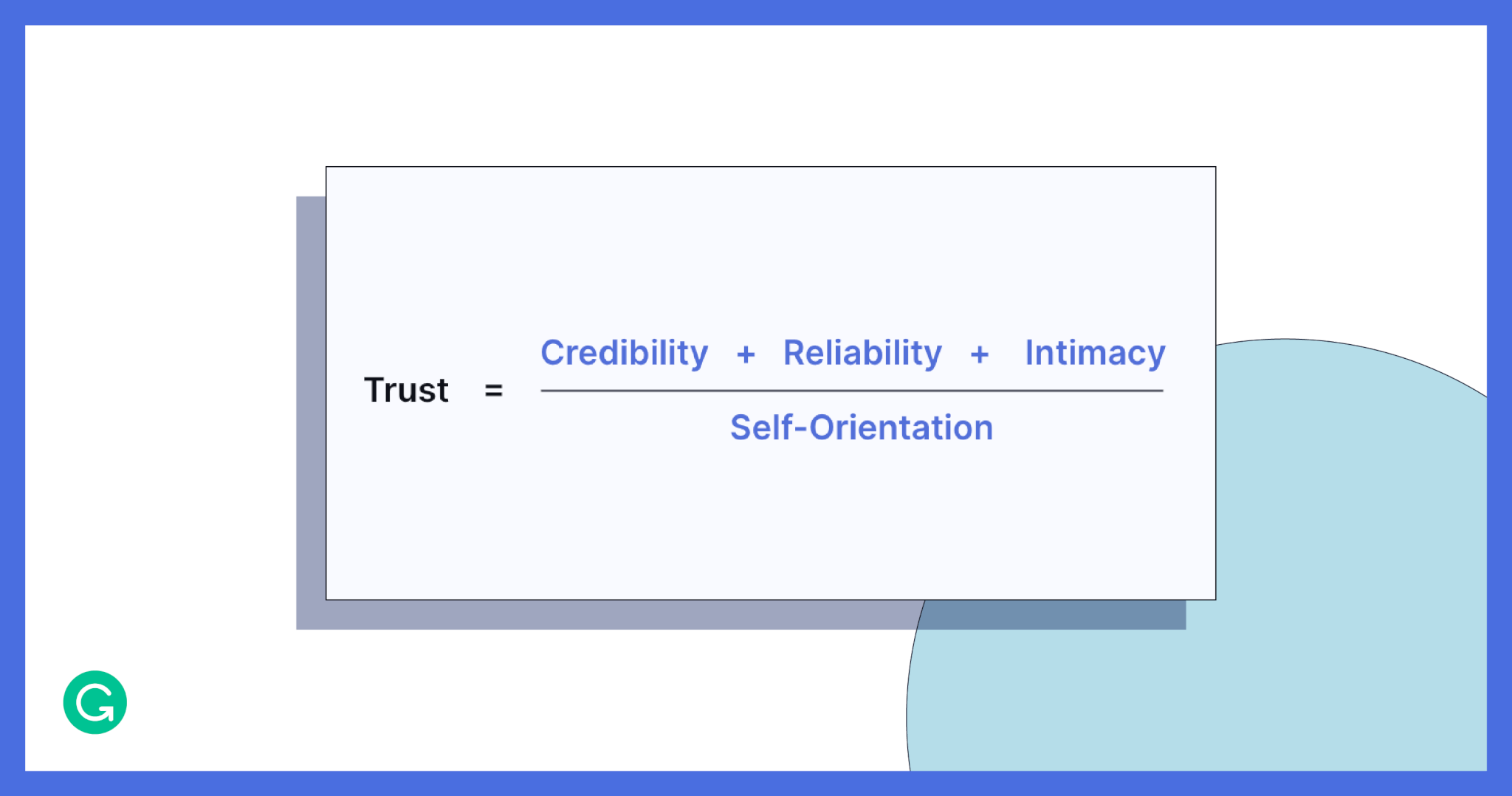
The trust equation
Self-orientation—the extent that our incentives are aligned with ourselves, not with our users—hurts trust. Credibility, reliability, and intimacy build trust. Do we know what we’re doing? Do we have a core brand promise, and can we consistently follow through on that promise to our users? And finally, can we connect with users on an emotional level and help them feel safe and in control?
As a tech optimist, I believe in the potential to harness natural language processing, machine learning, and other innovations in a way that brings users along on the journey, built on a rock-solid foundation of user trust. At Grammarly, we recognize that users are trusting us with some of their most personal communications, and we take our role as responsible stewards of this data very seriously. We’re committed to the highest standards of privacy, security, and safety, and we continue to invest in this area as a key pillar of our organization. We also recognize that part of earning trust is making every user feel safe. With projects such as mitigating gender bias in autocorrect and features that support inclusive language, we’re thinking every day about how Grammarly can support communication that makes others feel accepted and valued.
Looking ahead
Though so much about the future remains unclear, I know one thing: By focusing on the user, we can always find our way forward. I’ve had the good fortune of working on highly impactful projects that have reached billions of people around the world, and I see even more exciting challenges ahead.
Grammarly’s mission is to improve lives through improving communication. If this resonates with you, we’re growing rapidly and hiring people at every level, in every function, with our new remote-first hybrid work model. This model offers a lot of flexibility on location—check out our jobs page to learn more.

